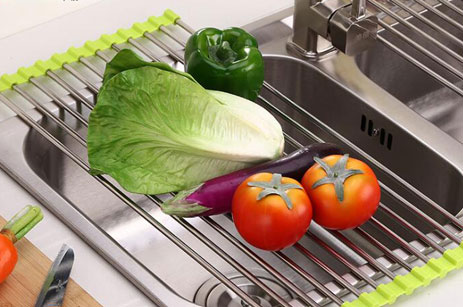A kitchen utensil is a small hand-held tool used for food preparation. Common tasks in the kitchen include cutting food to size, heating food over an open flame or stove, baking, grinding, mixing, and measuring; making different utensils for each task. General-purpose utensils such as cookware can be used for a variety of foods; for example: other kitchen gadgets are highly specialized and can only be used in conjunction with the preparation of specific types of food, such as egg separators or apple corers. Some specialized utensils are used when operations are to be repeated multiple times, or when the chef's flexibility or mobility is limited. The number of household kitchen gadgets varies with time and cooking style.
1. Copper for kitchen gadgets
Copper has good thermal conductivity, and copper utensils are durable and beautiful. However, they are also heavier than utensils made of other materials, require careful cleaning to remove toxic rusting compounds, and are not suitable for acidic foods. The copper pan is lined with tin to prevent discoloration or changing the taste of the food. The tin liner must be restored regularly and prevented from overheating.
2. Iron for kitchen gadgets
Iron rusts more easily than (tinned) copper. Cast iron utensil set for kitchen are less prone to rusting by avoiding abrasive scrubbing and prolonged soaking in water to create a seasoning layer. For some iron kitchen gadgets, water is a particular problem because it is difficult to dry them adequately. Iron egg beaters or ice cream coolers in particular are difficult to dry, and if they get wet later, subsequent rust can roughen them and potentially clog them completely. When storing iron utensils for extended periods of time, it is recommended to coat them in unsalted fat or paraffin (since salt is also an ionic compound). Iron cookware has few problems with high cooking temperatures, becomes smooth after prolonged use, is easy to clean, durable and relatively strong (i.e. doesn't break as easily as pottery), and retains well.
3. Stainless steel kitchen gadgets
Stainless steel has many applications in the manufacture of kitchen appliances. Stainless steel hardly rusts in contact with water or food, thus reducing the amount of work required to keep utensils in a clean and useful state. Cutting tools made of stainless steel maintain a usable edge without the risk of rusting found in iron or other types of steel.
4. Plastics for kitchen gadgets
Plastic can be easily formed by molding into a variety of shapes that can be used in kitchen appliances. Clear plastic measuring cups make it easier to see ingredient levels than glass measuring cups, and are lighter and less brittle. Plastic handles have been added to the utensils for improved comfort and grip. While many plastics deform or break down when heated, a few silicone products can be used in food preparation in boiling water or in an oven. Non-stick plastic coatings can be used on pans; newer coatings avoid the problem of plastic breaking down under intense heat.

 Español
Español English
English русский
русский





